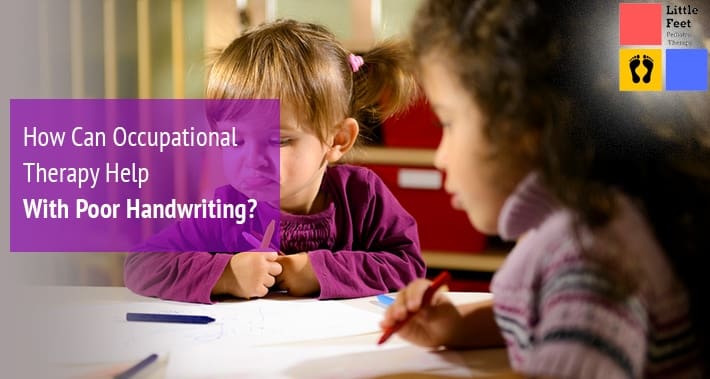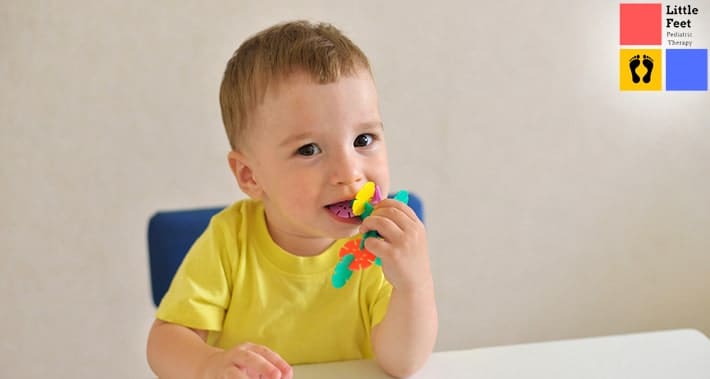
Have you noticed your child’s handwriting isn’t improving no matter how much they practice?
Because it’s such a unique skill that involves many different sub skills, all kids have awkward handwriting at first.
If your child has persistent issues with mirroring their letters, inconsistent spacing, trouble remembering what letters look like, or complaining of their hand being tired, this could be a sign they have an underlying cause to their handwriting woes.
Even though typing and smartphones feel like they’ve taken over the world of writing, handwriting will still be used in your child’s school every day, and into their adulthood.
If you have concerns that your child’s handwriting isn’t improving, pediatric occupational therapy near me can help.
A pediatric occupational therapist for poor handwriting can teach your child techniques to improve their handwriting, as well as offer pediatric therapeutic screening to check if there’s an underlying condition triggering their handwriting issues.
Your family doesn’t have to navigate your child’s handwriting troubles alone.
Let’s take a closer look at handwriting – how it develops, how to tell if your child isn’t meeting their occupational therapy milestones with regard to handwriting, and how a pediatric occupational therapist can help.
Do Kids Need Handwriting In The Age Of Smartphones?
While it may seem like good handwriting is unnecessary in an increasingly digital world, it can have a lot of importance for your child.
Even though schools increasingly rely on technology, a lot of schoolwork is still done by hand.
In class assignments will be especially likely to be done by hand.
Handwriting is often also seen as a form of personal expression that your child’s peers will be exploring around them.
If they’re behind on their handwriting or find it “embarrassing,” this may make them feel left out.
The skills your child develops in handwriting will have a significant amount of overlap with others as well.
Poor handwriting is often a sign of other fine motor difficulties as well.
This could include trouble with dressing, shoe tying, using utensils, or other daily tasks that require precise movement patterns.
Additionally, difficulty with handwriting could be an indicator of some sensory processing difficulties.
How To Tell If Your Child Has Poor Handwriting Issues
Signs that your child might struggle with handwriting can appear early – for example, if your child is in preschool and often breaking their crayon when coloring, they may have a grip that is too firm.
Letters that appear too dark or light on the paper may indicate your child’s inability to regulate pencil pressure.
Your child might also scribble continuously, which is related to sensory issues and means they are giving themself something called “proprioceptive feedback.”
This can be a sign of sensory processing disorder, occupational therapy treatments for which can include sensory integration therapy.
Your child might seem to have little awareness of lines or write certain letters in reverse no matter how many times they are corrected.
These issues and more might indicate that your child has issues with their handwriting.
What Skills Does Your Child Need For Handwriting?
Handwriting requires a complex interweaving of many different skills, which is why it can be so challenging to learn.
Fine motor skills may seem the most obviously involved, but visual and cognitive skills play key roles in handwriting as well.
Motor skills, pencil grip, muscle memory, and hand eye coordination are all vital skills for handwriting.
Even body posture can play a role in your child’s handwriting development.
Let’s take a closer look at each of them.
Fine Motor Skills
Fine motor skills are the ability to control smaller groups of muscles in your hand.
There are a number of different fine motor skills your child will develop, but one in particular that’s important for handwriting is tripod grip.
This is the ability to grasp an object between their index and middle fingers and their thumb.
It’s also important for being able to fasten buttons, so if you notice your child struggling with both it’s likely they have an issue with tripod grip.
Another important fine motor skill is crossing midline – this is what happens when your child moves their hand or foot across the middle of their body to the other side.
That may seem intuitive to you, but this is a skill your child needs to develop.
Before then, they’ll typically only use their left limbs on their left side, and their right limbs on their right side.
Writing on a piece of paper on a desk in front of them will require them to use this crossing midline skill.
Your child’s occupational therapist will watch for issues with these and other fine motor skills to understand what’s at the root of your child’s handwriting issues.
Pencil control skills being taught separately from letter formation can be helpful for some children so they can address fine motor skills separately.
Multitasking can be a difficult task on its own, so it’s best for your child to only have to focus on one skill at a time.
Visual Memory Skills
Your child’s visual memory skills are important as they begin navigating the spatial reasoning involved in handwriting.
Remembering how to make letters a consistent size and space them apart from each other properly are both parts of visual memory skills.
Visual memory also involves your child’s ability to remember what the letters look like when they aren’t directly copying something on the same sheet of paper.
Visual Processing Skills
Related to visual memory skills are visual processing skills, which help your child’s handwriting within their visual shift and visual tracking.
These are the skills needed as your child shifts perspective from looking at something on the blackboard or a book to looking at their blank page to write it down.
Additionally, trouble with this task could be an indicator of unintegrated reflexes.
Visual tracking skills also help your child know where one letter stops and another begins in a word.
Posture
When you think of a stereotypical writer, you might picture someone in a dimly lit room hunched over a typewriter, but if your child has a similar posture, it can interfere with their handwriting development.
This is because poor posture can put unnecessary strain on your child’s muscles and joints, which can affect their fine motor skills.
Poor posture can be habitual, but it can also be linked with wearing heavy backpacks, stress, injuries, or a congenital condition, among others.
In such cases, if you’re having difficulty correcting your child’s posture, they might benefit from pediatric physical therapy as well as occupational therapy.

What Causes Poor Handwriting?
All kids’ writing will not look the best at first – that’s just a part of learning and is not a cause for concern.
If it seems like your child is having persistent issues that aren’t benefiting from repeated corrections, however, this may be a sign of a deeper issue.
Depending on the cause of your child’s handwriting issue, an occupational therapist can help.
Underdeveloped fine motor skills and poor visual motor integration are both potential causes of handwriting issues.
Orthographic coding issues, the skills your child needs to learn to remember what a letter or word looks like, are also a typical cause of handwriting issues.
Each of the above causes is an area where your child’s occupational therapist will be able to help.
With various techniques that tackle your child’s unique barriers, your child’s pediatric occupational therapist from Little Feet Pediatric Therapy can help your child tackle improving their handwriting.
Book Your Appointment With Little Feet Pediatric Therapy Today
If you’re starting to have concerns about your child’s handwriting, don’t hesitate – we can help.
Book your appointment with Little Feet Pediatric Therapy today.
► 3535 Randolph Rd, Charlotte, NC 28211
► 1331 H St NW Ste 200, Washington, DC 20005
► St. Louis, MO
► Raleigh, NC
Founded in 2019, Little Feet Therapy offers on site pediatric physical and occupational therapy treatments for children from 2 months to 18 years old with physical and developmental concerns. Our clinics focus on providing therapy in a child’s natural setting where your child is in familiar surroundings, it puts their mind at ease and helps them focus more on the work they’re doing with their pediatric therapist. Our therapists will work with your child at your home, at school, at daycare, or another place in the community where they feel most comfortable.